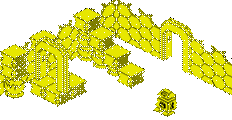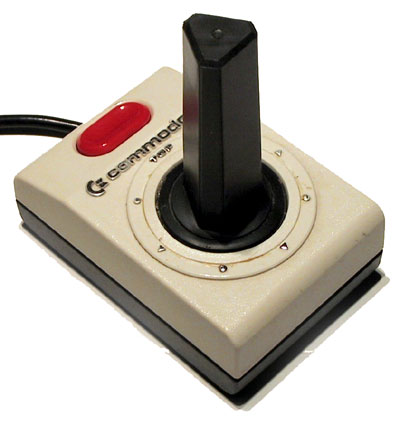Commodore VIC-20
Vital Statistics
Introduced
January 1981 |
|
![]()
In 1980 Commodore began designing a new video chip (the VIC-1, aka 6560) for use in the video game industry. It was originally intended to be sold to third party video game manufacturers for use in their machines, but no one was interested so in April of the same year, Jack Tramiel, the then-president of Commodore, ordered the development of a computer built around this new chip that could sell for less than $300 USD in order to recoup their losses. Commodore pitched the VIC-20 as a more home-friendly version of the Commodore PET, and direct competitor to the Tandy TRS-80 Color Computer and the Atari 400. It was called 'VIC' because of the VIC video chip it was built around - this chip was the predecessor to the Commodore 64's VIC-II chip, and the C65's VIC-III chip, although the VIC-I was unable to generate hardware sprites which the VIC-II/III could. The VIC-20 had the capability to output to a composite computer monitor but required the use of an external RF modulator (bundled with the VIC) in order to display on a standard television,. It used the same CPU and BASIC version as the earlier PET.
The very last VIC-20 rolled off the production line in January 1985, following the release of the Commodore 64 two years earlier, which by this time had massively overtaken the VIC-20 in sales. The C64 was to become Commodore's entry-level home computer as part of it's product realignment before the forthcoming release of the C128 and Amiga. The VIC-20 introduced millions of people to the fascinating world
of personal computing all over the globe. As the VW Beetle was the
people's car, the Commodore VIC-20 was a computer for the people.
Indeed, it was, "The Friendly Computer". A wide variety of peripherals were produced for the VIC-20 throughout its lifetime. It always came bundled with a cassette recorder, the "C2N Datasette", and an RF modulator whilst others were cost options. Many third-party companies also made peripherals for the VIC, including RAM expansion cartridges, printers, and more.
Over 160 cartridges were manufactured for the VIC-20, including popular titles seen on other machines such as Defender, Choplifter, Pharaoh's Curse, Demon Attack, and Miner 2049'er. Even today, the VIC-20 has an active community of enthusiasts. In October 2007, the VIC-20 Denial community released the Mega-Cart. Branded as the 'ultimate cartridge for your VIC-20', it is a multi-purpose cartridge for both PAL and NTSC machines that allows you to play all known cartridge games released for the VIC plus a selection of some of the best games released on tape and disk. It has a built-in reset button that allows you to return to the startup menu, and contains useful utilities for programmers and provides an easy-to-select memory expansion that can be disabled too. For more information, click here to visit the official site at www.mega-cart.com. Buyers GuideThe VIC-20 went through 3 main iterations in its lifetime, with "A", "B" and "C" revisions: "A" revisions were those with a mainboard Assy (Assembly number) 1001006. The MOS 6502 CPU is on the far-left of the board. Some of the later "A" variants got a revised heatsink and two metal guides around the cartridge slot. The power socket is a 2-pin type, delivering just AC mains and internally the mainboard has a large AC-to-DC converter which supplies 5V DC to the rest of the board. "B" revisions arrived in late 1981, and are those with assy 324003. The 6502 CPU was moved to the lower right corner of the board, with two of the ROM chips to the right of it. The VIC chip and other video circuitry now has a metal shield around it to prevent interference with the rest of the board. Same 2-pin AC power as before. "C" revisions are the Cost-Reduced ones that arrived in 1982 with assy 250403. The 16 2104 RAM chips were replaced with two 6116 chips. Power socket is now a 7-pin DIN similar to the Commodore 64. The 6502 got moved again even further to the right. To the untrained eye, the VIC-20 case appears to be the same 'breadbin' style as used in both the C16 and C64 (just in a different colour), but there are slight differences which don't necessarily make them interchangeable. Earlier cases were slightly taller and longer than the CR version. In 2015, a popular auction site had these average prices for a VIC-20 (not incl. packaging and delivery costs):
These auctions ranged from no peripherals (not even a power supply or a 1531 Datasette), through to others with PSU, datasette, some cartridges, original manuals, etc. Boxed examples looked well cared for, and fortunately it is rare to see a VIC-20 that has suffered much in the way of yellowing. Low serial number examples and those with the original Commodore PET keycaps, 2-pin power socket and the black and gold logo strip tend to fetch a little more due to rarity. In 2019, a check on the auction sites showed a general trend of prices increasing:
In 2021, it appears the trend upwards continues:
In all of the above, having a handful of cartridges and a power supply bundled in didn't make much difference to the selling price, though the more bundled in the better (original warranty cards, manuals in as-new condition, 10+ cartridges, etc). I would say peripherals account for about 10% of the selling price in 2015-2021. |
Commodore VIC-20 News12 September 2021Boulder Dash on the VIC
11 June 2018Penultimate+ cartridge for VIC-20 starts shipping
17 May 2018Mine Sweep Mini Released for Vic-20
13 October 2017Floppy Days episode #77 out now
|












 Originally unveiled at the 1980 CES (Computer Electronics Show),
it had no name and was simply referred to as the MicroPET (internally
within CBM still codenamed "Vixen"). It was launched initially just to the US and Canadian markets, but then quickly went worldwide. When it hit the shelves
in 1981, it was received with overwhelming enthusiasm, and soon
daily production peaked at 9000 units! It was also released in Germany
with the name 'VC-20', and in Japan with the name 'VIC-1001' with
additional katakana characters on the keycaps and a different character
generator ROM. While the PET was being sold only through authorised
dealers, the VIC-20 was sold through retail stores where it could
compete more effectively against games consoles and other toys.
Originally unveiled at the 1980 CES (Computer Electronics Show),
it had no name and was simply referred to as the MicroPET (internally
within CBM still codenamed "Vixen"). It was launched initially just to the US and Canadian markets, but then quickly went worldwide. When it hit the shelves
in 1981, it was received with overwhelming enthusiasm, and soon
daily production peaked at 9000 units! It was also released in Germany
with the name 'VC-20', and in Japan with the name 'VIC-1001' with
additional katakana characters on the keycaps and a different character
generator ROM. While the PET was being sold only through authorised
dealers, the VIC-20 was sold through retail stores where it could
compete more effectively against games consoles and other toys. By 1982, sales of the VIC-20 had reached 300 million. Later that year, Commodore released the VIC-20 CR (Cost Reduced) model,
which replaced the eight 1Kx4 SRAM chips with two 2Kx8 chips, although
there were no cosmetic differences to the original. Commodore apparently
had a major overstock of 1Kx4 SRAM chips when the VIC-20 was first
released, hence their use in the earlier machines. Commodore also dropped the price to $200 in late '82. The VIC-20 continued
to sell in great quantity during the first few years of the VIC-30
(a.k.a. C64) due to the high price tag for the '64. Once the cost
of the C64 was dropped, the VIC-20 disappeared into history.
By 1982, sales of the VIC-20 had reached 300 million. Later that year, Commodore released the VIC-20 CR (Cost Reduced) model,
which replaced the eight 1Kx4 SRAM chips with two 2Kx8 chips, although
there were no cosmetic differences to the original. Commodore apparently
had a major overstock of 1Kx4 SRAM chips when the VIC-20 was first
released, hence their use in the earlier machines. Commodore also dropped the price to $200 in late '82. The VIC-20 continued
to sell in great quantity during the first few years of the VIC-30
(a.k.a. C64) due to the high price tag for the '64. Once the cost
of the C64 was dropped, the VIC-20 disappeared into history.








